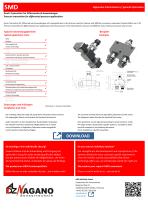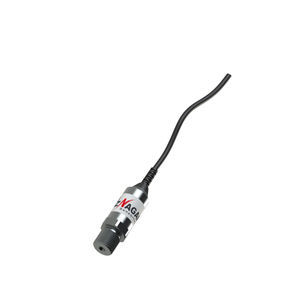
- Farm Management
- Measuring instrument
- ADZ NAGANO GmbH
Pressure switche SMD
Add to favorites
Compare this product
Description
What is a differential pressure switch?
A differential pressure switch is a pressure switch that measures the pressure difference between two points and triggers an electrical switching signal when a defined threshold is reached. This switching signal can be used to control processes, trigger alarms or initiate automatic reactions in systems. Typical areas of application are the monitoring of filters, the verification of air flows or the assurance of stable operating pressure in closed systems.
How it works: What does a differential pressure switch do?
Our differential pressure switches are characterized by their proven electronics and high accuracy. They are designed for a wide range of line pressures in the pressure range from vacuum to 5000 bar and support a maximum pressure ratio of 1:20 between the desired differential pressure and the maximum permissible line pressure.
The pressure is recorded and processed using modern sensor technology, which converts the measured differential pressure into an electrical signal. This signal is then transmitted by a normally closed or normally open contact, which is activated as soon as the set pressure value is reached. As a result, our differential pressure switches offer a reliable and precise solution for monitoring pressure conditions in a wide range of applications.
Catalogs
SMD
2 Pages
Related Searches
*Prices are pre-tax. They exclude delivery charges and customs duties and do not include additional charges for installation or activation options. Prices are indicative only and may vary by country, with changes to the cost of raw materials and exchange rates.



